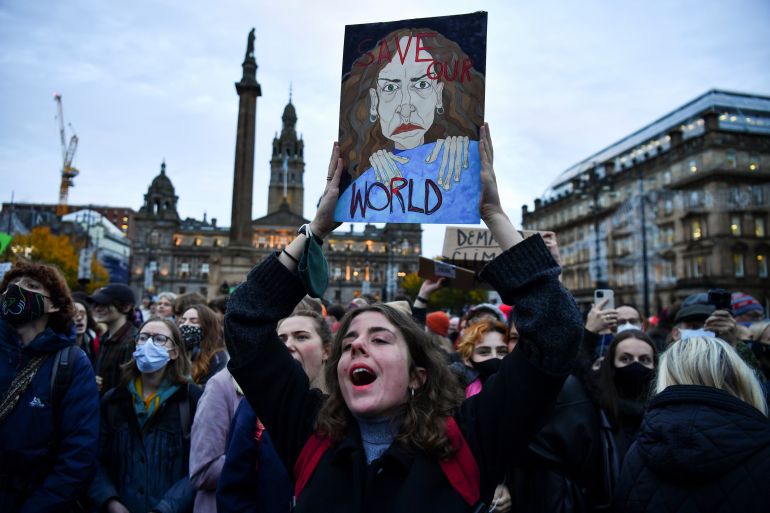World on track for 2.4C warming despite 2030 pledges: Analysis
The Climate Action Tracker research group says despite COP26 pledges, global warming would still surpass UN target cap of 1.5C.

A climate research group has said 2.4 degrees Celsius (4.3 degrees Fahrenheit) of global warming was likely this century, despite pledges from numerous countries to tackle climate change.
According to the Climate Action Tracker (CAT) research group, promises by nations attending the COP26 conference to cut greenhouse gas emissions by 2030 would still allow the Earth to heat up well beyond the United Nations target cap of 1.5C (2.7F) by 2100.
Keep reading
list of 4 itemsHot air: Scepticism over Indonesia’s COP26 deforestation pledges
COP26: Obama criticises China and Russia for ‘lack of urgency’
Messages to COP26 from a generation on fire
“Even with all new Glasgow pledges for 2030, we will emit roughly twice as much in 2030 as required for 1.5C,” it said in a news release on Tuesday, referring to the goal for warming since pre-industrial levels set down in the 2015 Paris Agreement.
“Policy implementation on the ground is advancing at a snail’s pace,” it added, saying with current policies, there would be 2.7C (4.8F) of warming.
CAT global update: Glasgow has a credibility gap between talk and action. If all govts met their 2030 targets, we would have 2.4˚C of warming in 2100. But right now, current policies put us at 2.7˚C. https://t.co/dkX4jAbo2f
A Thread 🧵 pic.twitter.com/EdLlIfdhXt— ClimateActionTracker (@climateactiontr) November 9, 2021
In all scenarios, warming this century will blow past the 1.5C limit, according to CAT – a target that scientists say the world must meet to avert the most devastating impacts of climate change.
The CAT said in an “optimistic scenario” where some countries’ longer-term goals to stop increasing the level of greenhouse gases in the atmosphere – “net zero” – by 2050 or later were actually implemented, warming could be limited to 1.8C (3.2F) this century.
That’s the same figure as the International Energy Agency came up with for the optimistic scenario.
‘Catastrophic’
However, the group cautioned against assuming the longer-term pledges would be met as most nations are yet to implement short-term policies or legislation needed to get on track for those goals.
“The pledges so far made at COP26 are quite inadequate and considering only those targets for 2030 would limit global warming to 2.4 degrees Celsius,” Bill Hare, CEO of Climate Analytics, one of the organisations behind the CAT, told Al Jazeera.
Hare said that estimate would be “really catastrophic” and would lead to “very high-temperature heat waves, crop failure, extreme drought … and in the long term, multi-metre sea level rise”.
“The picture is slightly better if you add incredible net-zero goals, which would bring the warming down to 2.1 degrees Celsius (3.8F). But the really big problem is that the policies and actions that governments actually have in place would push warming to 2.7 degrees Celsius, in other words, there is a huge gap between what come governments promising and what they’re doing,” he added.
To keep the 1.5C limit, scientists have said global greenhouse gas emissions – mostly the carbon dioxide emitted by burning coal, oil and gas – must fall 45 percent by 2030 from 2010 levels, and reach net zero by 2050.
Jennifer Morgan, executive director for Greenpeace International, said CAT’s findings were “devastating” and called for countries at COP26 to agree to meet each year until the gap to 1.5C is closed.
Some 90 percent of global emissions are now covered by a net-zero target – yet the “vast majority” of nations’ climate plans for the upcoming decade are inconsistent with long-term net-zero targets, CAT said.